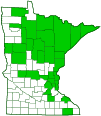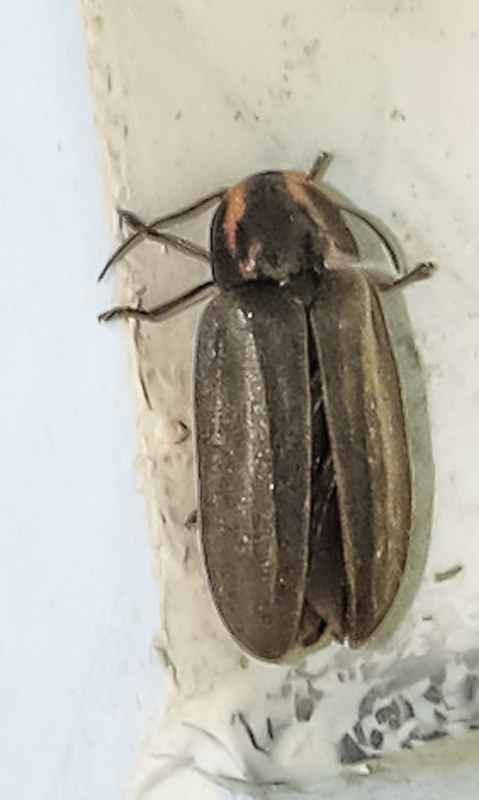winter firefly
(Ellychnia corrusca)
Conservation • Description • Habitat • Ecology • Distribution • Taxonomy
|
|
||||||||||||||
Description |
Winter firefly is a medium-sized, ⅜″ to 9 ⁄16″ long, diurnal firefly. The thoracic shield (pronotum) is semi-elliptical. It does not have translucent windows. It is pale with a broad black stripe in the middle and a narrow black stripe on the left and right margins. The pale area between the stripes is usually mostly pale rose colored. From above the pronotum appears black with pale rose “parentheses” markings. The forewings (elytra) are black without pale borders or stripes. They have minute, brownish-gray hairs that give them a dusty appearance. The head is concealed beneath the pronotum. The antennae are thread-like and black. They are not flattened. The third antennal segment is shorter than the first. The legs are black. The end segment of each leg (tarsus) has 5 sections. There are no bioluminescent organs. |
Size |
Total length: ⅜″ to 9 ⁄16″ |
Similar Species |
Other Ellychnia species are smaller, 3⁄16″ to 5 ⁄16″long, and do not have pale hairs on the elytra. |
Habitat |
Moist, marshy areas |
Ecology |
Season |
May to late September |
Behavior |
Adults are active during the day. They do not possess bioluminescent organs and therefore do not light up. Overwintering adults may become active on warm, sunny, winter days, moving a short distance from their wintering spot. |
Life Cycle |
Adults overwinter in a crevice of tree bark. They emerge and become active in March. Breeding occurs in April and May. Eggs hatch in about 16 days. Adults of the previous season die in late spring. The larvae feed on rotting wood and pupate in the fall. Adults of the new season emerge before snowfall. |
Larva Food |
Rotting wood |
Adult Food |
Maple tree sap and flower nectar in the spring, and possibly goldenrod and aster flower nectar in the autumn. |
Distribution |
||
|
Sources |
|
| 4/23/2024 | ||
Occurrence |
||
Common |
||
Taxonomy |
|
Order |
Coleoptera (Beetles) |
Suborder |
Polyphaga (Water, Rove, Scarab, Long-horned, Leaf, and Snout Beetles) |
Infraorder |
Elateriformia |
Superfamily |
Elateroidea (click, firefy, and soldier beetles) |
Family |
|
Subfamily |
Lampyrinae (typical fireflies) |
Tribe |
Photinini |
Genus |
|
Species complex Genus |
|
Subordinate Taxa |
|
|
|
Synonyms |
|
Photinus corrusca |
|
Common Names |
|
winter firefly winter firefly beetle |
|
Glossary
Elytra
The hardened or leathery forewings of beetles used to protect the fragile hindwings, which are used for flying. Singular: elytron.
Pronotum
The exoskeletal plate on the upper side of the first segment of the thorax of an insect.
Tarsus
The last two to five sections of an insect’s leg, attached to the tibia; the foot. Plural: tarsi.
Visitor Photos |
||
Share your photo of this insect. |
||
This button not working for you? |
||
Alfredo Colon |
||
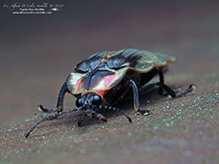 |
||
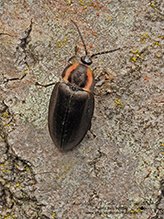 |
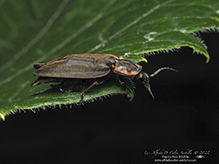 |
|
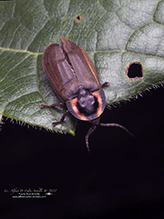 |
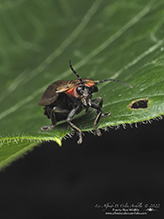 |
|
Babette Kis |
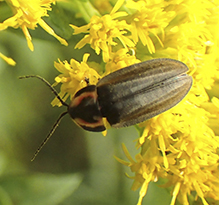 |
Ellychnia corrusca Winter Firefly Ellychnia corrusca, winter firefly, on rigid goldenrod, Barnes Prairie, Racine Co., WI. Photo was taken on Sept. 13, 2020. |
Bill Reynolds |
||
Found these fireflies hanging out on one of my bee hives. |
||
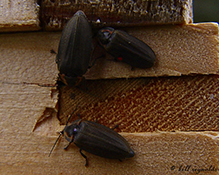 |
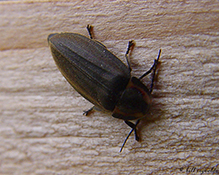 |
|
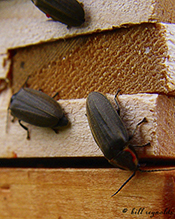 |
||
MinnesotaSeasons.com Photos |
||
|
||
|
||

Visitor Videos |
||
Share your video of this insect. |
||
This button not working for you? |
||
|
Other Videos |
||
Ellychnia Fireflies (Lampyridae: Ellychnia corrusca) Mating |
About
Uploaded on Jun 17, 2011 This is one of our most common diurnally-active fireflies (i.e., fireflies which do not possess abdominal light organs in the adult stage of their life cycle). Photographed at Fisher, Minnesota (17 June 2011). |
Diurnal Firefly (Lampyridae: Ellychnia corrusca) Mating |
About
Uploaded on May 19, 2010 Photographed at Rydell NWR, Minnesota (18 May 2010). Go here to read more about this species: http://bugguide.net/node/view/42641 |
Diurnal Firefly (Lampyridae: Ellychnia corrusca) Taking Flight |
About
Uploaded on May 27, 2010 Photographed at the Rydell NWR, Minnesota (27 May 2010). Go here to read more about this species: http://bugguide.net/node/view/42641 |
Diurnal Firefly (Lampyridae: Ellychnia corrusca) on Wall |
About
Uploaded on May 24, 2011 Photographed at Turtle River State Park, North Dakota (24 May 2011). Thank you to 'v belov' (@Bugguide.net) for confirming the identity ofn this specimen! |
Diurnal Firefly (Lampyridae: Ellychnia corrusca) on Oak Bark |
About
Uploaded on Apr 23, 2011 Photographed at the Turtle River State Park, North Dakota (23 April 2011). |

Visitor Sightings |
||
Report a sighting of this insect. |
||
This button not working for you? |
||
Alfredo Colon |
Location: Albany, NY |
 |
| Alfredo Colon 4/7/2024 |
Location: Albany, NY |
 |
| Alfredo Colon 8/18/2022 |
Location: Albany, NY |
 |
| Babette Kis 9/13/2020 |
Location: Barnes Prairie, Racine Co., WI Ellychnia corrusca, winter firefly, on rigid goldenrod, Barnes Prairie, Racine Co., WI. Photo was taken on Sept. 13, 2020. |
 |
| Bill Reynolds 9/20/2014 |
Location: Pennington Co MN Found these fireflies hanging out on one of my bee hives. |
 |
MinnesotaSeasons.com Sightings |
||
|

Created: 9/24/2014 Last Updated: © MinnesotaSeasons.com. All rights reserved. |
